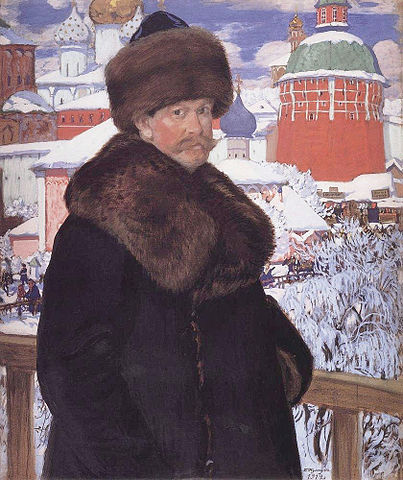Boris Kustodiev: The Master of Imitative Art

By Boris Kustodiev - http://www.abcgallery.com/K/kustodiyev/kustodiyev77.html, Public Domain, Link
Conveying the inexhaustible strength and beauty of the Russian soul through his poetic paintings, as well as producing masterpieces in almost all the imitative arts such as genre-painting, psychological portraiture, book illustration and stage designing, the Russian painter and stage designer, Boris Mikhaylovich Kustodiev, is honored among those innovative artists who worked to create a new socialist culture in the early 20th century.
Born in Astrakhan on March 7, 1878, into the family of a professor of philosophy, history of literature, and logic, Kustodiev lost his father at a young age. Due to financial and material burdens, the family moved to a small rented wing in a rich merchant’s house. It was here that the boy’s first impressions were formed of the way of life of the provincial merchant class.
Between 1893 and 1896, Kustodiev took private art lessons in Astrakhan from Pavel Vlasov, a pupil of Vasily Perov. Subsequently, from 1896 to 1903, he attended Ilya Repin’s studio at the Academy of Arts in St. Petersburg. Concurrently he took classes in sculpture under Dmitry Stelletsky and in etching under Vasily Mathe. He also exhibited his first exhibition in 1896.
In 1904, Kustodiev attended the private studio of Rene Menard in Paris. The same year he traveled to Spain, in 1907 to Italy and in 1909 he visited Austria, France, and Germany, and again in Italy. During these years, he painted many portraits and genre pieces. In 1905-06, he contributed to the satirical journals Zhupel (Bugbear) and Adskaya Pochta (Hell’s Mail).
In 1909, Kustodiev was made an Academician of painting. In 1910, he joined the association Mir Iskusstva (World of Art), a group of innovative Russian artists, and subsequently took part in all their exhibitions. Earlier, in 1909, he developed the initial symptoms of the grave illness that paralyzed the lower part of his body in 1916 and thus confining him to his studio where he continued to paint, relying on memories from his boyhood and youth and on his imagination.
Despite his paralysis, Kustodiev’s ability to remain joyful and lively amazed others. His colorful painting and joyful genre pieces do not reveal his physical suffering, and on the contrary, give the impression of a carefree and cheerful life. His “Pancake Tuesday/Maslenitsa” (1916) and “Fontanka” (1916) are all painted from his memories. He meticulously restores his own childhood in the busy city of the Volga banks.
In 1923, Kustodiev joined the Association of Artists of Revolutionary Russia. He continued to paint, make engravings, illustrate books and design for theatre up until his death on May 28, 1927, in Leningrad.
References:
www.abcgallery.com/K/kustodiyev/kustodiyevbio.html
https://seanmunger.com/2015/03/06/historic-painting-maslenitsa-by-boris-kustodiev-1919
www.the-athenaeum.org/art/list.php
www.rusartist.org/boris-mikhailovich-kustodiev-1878-1927
www.wikiart.org/en/boris-kustodiev
https://en.wikipedia.org/wiki/Boris_Kustodiev
www.dailyartfixx.com/resources/artist-birthdays
